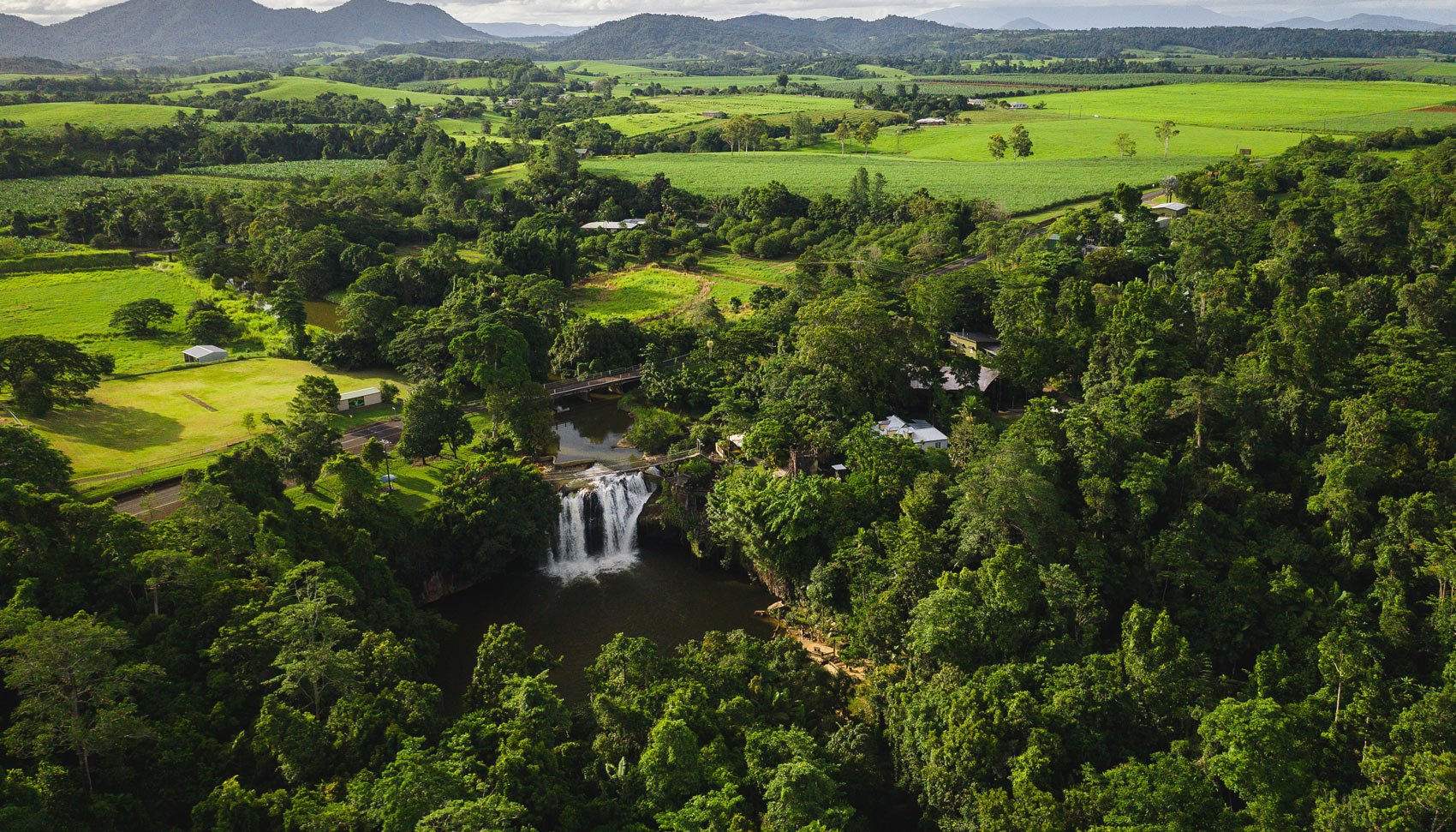Distance
52km (one way)
How
Car or Camper
Where
Kurrimine Beach to Innisfail
Date
all year round
They call it the “Greatest Detour in the North”, but you’ll soon find out that The Canecutter Way is much more than that. It follows the route of the Old Bruce Highway, running between Kurrimine Beach in the south and Innisfail in the north. The Canecutter Way passes through thriving rural communities, vast sugar-cane fields and fruit orchards, and into historic towns. It’s only a short drive, but take your time and discover the unique delights of the Cassowary Coast region.
Get DirectionsDAY ONE
Kurrimine Beach to Mena Creek

Kurrimine Beach, a picturesque fishing village that’s well off the tourist map, is one of the few places in the region that you can access the Great Barrier Reef from the shoreline. The reef is so close that at very low tide you can walk out to the local stretch, King Reef (you’ll need to wear sturdy shoes). Stroll along the town’s often-deserted beach to spot manta rays cruising through the shallows or turtles coming in to nest, and throw a line out at one of the area’s many fishing spots.
Start your journey by heading inland towards the historic sugar-cane farming community of Silkwood. Here, you can visit the smallest bank in the country, now a museum, as well as other heritage buildings from the town’s heyday. Silkwood is most famous for its Feast of the Three Saints, Australia’s largest religious festival, held on the first Sunday in May. It attracts thousands of people from across the region and is a celebration of life and faith you won’t soon forget.
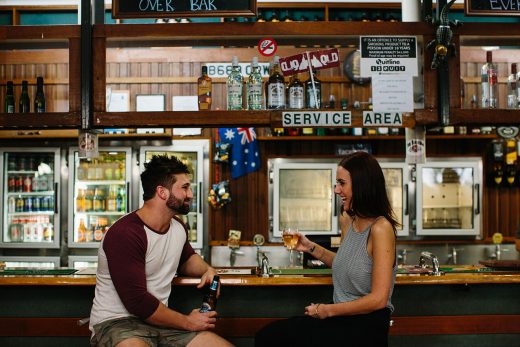
The Canecutter Way continues on through the heart of Tropical North Queensland, past rolling farmland, along Liverpool Creek and through the town of Japoonvale. The unique name is thought to come from an Aboriginal word describing eels.
Your first overnight stop is Mena Creek, a sugar-cane town that dates back to the early 1900s. At the end of the day, join the locals for a drink in the Mena Creek Hotel, a classic Queenslander-style watering-hole that was named Best Bush Pub in the state in 2017.
DAY TWO
Mena Creek to Innisfail

Today you’re visiting the one-of-a-kind Paronella Park, a magical Spanish castle and “pleasure garden” hidden among the rainforest. Built in the 1930s, it was the dream of Catalonia-born José Paronella, a former cane cutter who created a lush paradise of tropical gardens, exotic plants and winding paths, set around a spectacular waterfall. Take a tour to hear José’s incredible story and learn the fascinating history of this extraordinary folly.
This is the westernmost point of the drive, so now make a gentle turn and head north-east back towards the coast. The road passes through South Johnstone, another historic sugar-cane centre. If you’re keen to learn more about the industry that built this region, take a detour off the main route to visit the Australian Sugar Heritage Centre in Mourilyan. There’s an impressive collection of photographs, books, documents and old equipment.
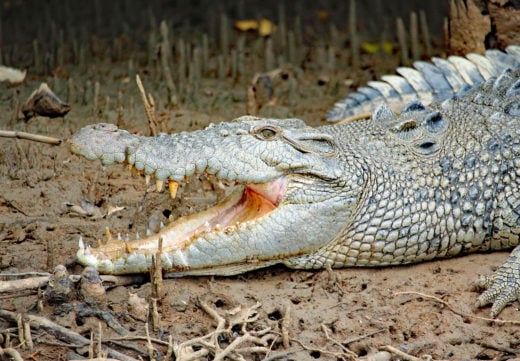
Your mini-road trip finishes in Innisfail, the largest town on the Cassowary Coast. Most of the town was destroyed by a cyclone in 1918 and had to be completely rebuilt, making Innisfail the art deco capital of Australia. Wander through the centre where the streets are lined with charming brightly coloured buildings. Take a cruise along the Johnstone River with Snapping Tours to explore the World Heritage-listed Wet Tropics Rainforest and keep an eye out for saltwater crocodiles sunning themselves on the sandbanks.
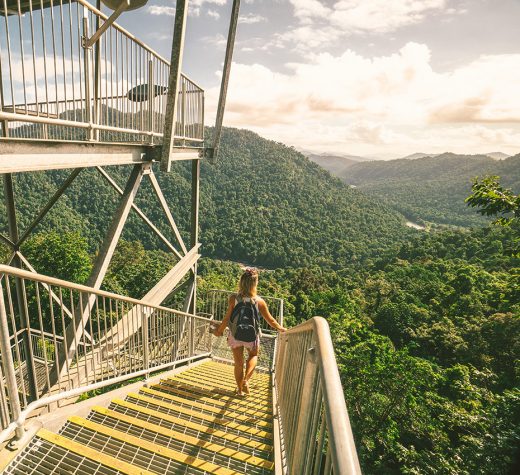
Finish your trip at Mamu Tropical Skywalk, located in Wooroonoon National Park, about 15 minutes from town. Wander along the 350m-long elevated walkway through the rainforest canopy, and take in the view of the North Johnstone River Gorge from the 37m-high observation tower.
Optional Detour – Etty Bay
Etty Bay, 15km from town, is one of the prettiest beaches in Tropical North Queensland, with a gently curving arc of fine white sand backed by emerald rainforest. It’s also the place to spot cassowaries, the giant native bird that gives this region its name. These strange creatures can often be seen walking along the shore or even down the road. They are generally unperturbed by humans, but you’ll still need to keep a safe distance – there’s a good reason cassowaries are one of the most dangerous birds in the world.
Explore more
Discover the charming Cassowary Coast
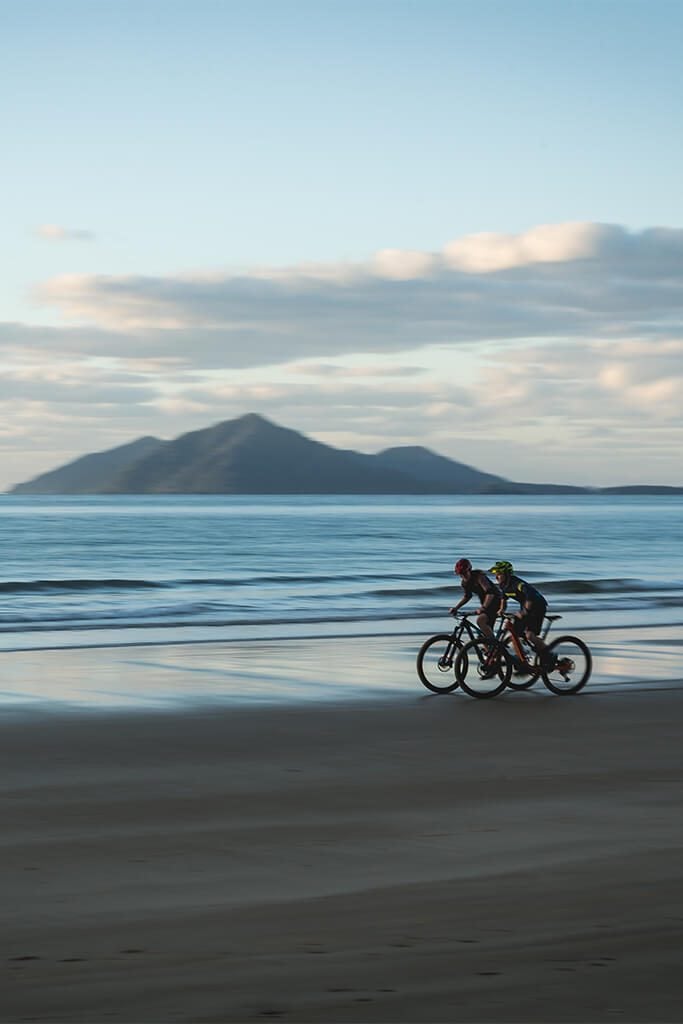
48 hours mountain biking the Cassowary Coast
From making first tracks at sunrise along the coast to meeting friendly local wildlife in the ancient rainforest, uncover the secrets of the mountain biking trails of Mission Beach and surrounds.
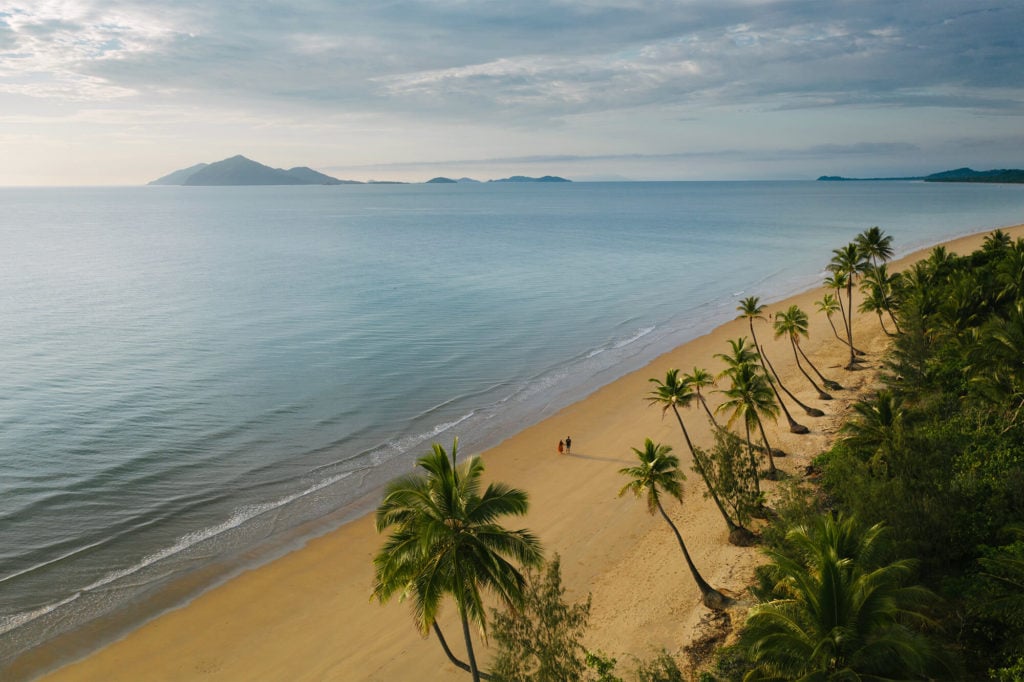
Guide to the natural attractions around Mission Beach
Snuggly tucked along the Cassowary Coast, Mission Beach and its 14 kms of golden beaches are one of Australia’s best-kept secrets. Here are all the reasons why.
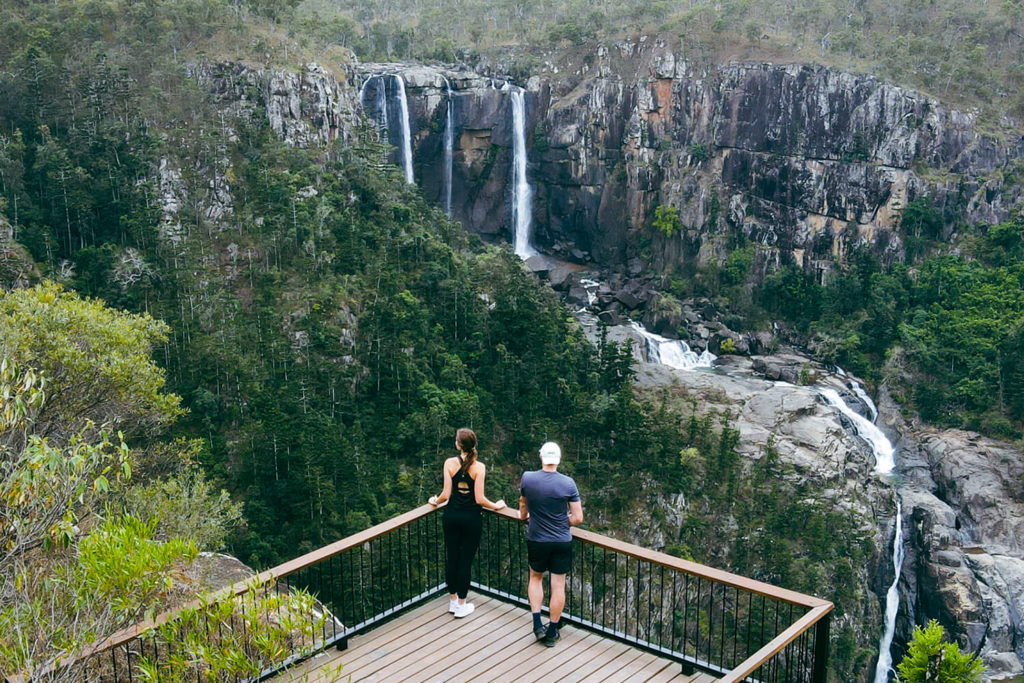
12 other things to do when visiting the Cardwell Spa Pool
Whether you’re out to catch a barra, hike Australia’s largest island National Park or adventure your way through a scenic 4WD track, Cardwell is the perfect launch pad for an outdoorsy weekend with a friendly local twist.
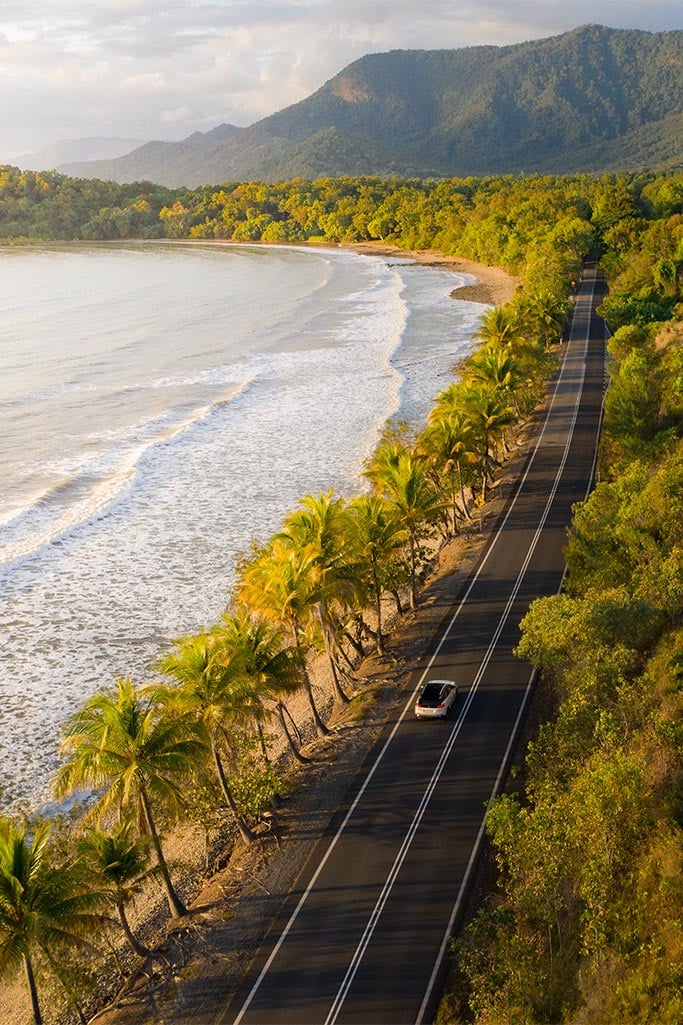
Mini road trips in Tropical North Queensland
Discover local specialties and hidden gems on a mini road trip through Tropical North Queensland with these one day wonders. Here are eight itineraries to get you out and about.
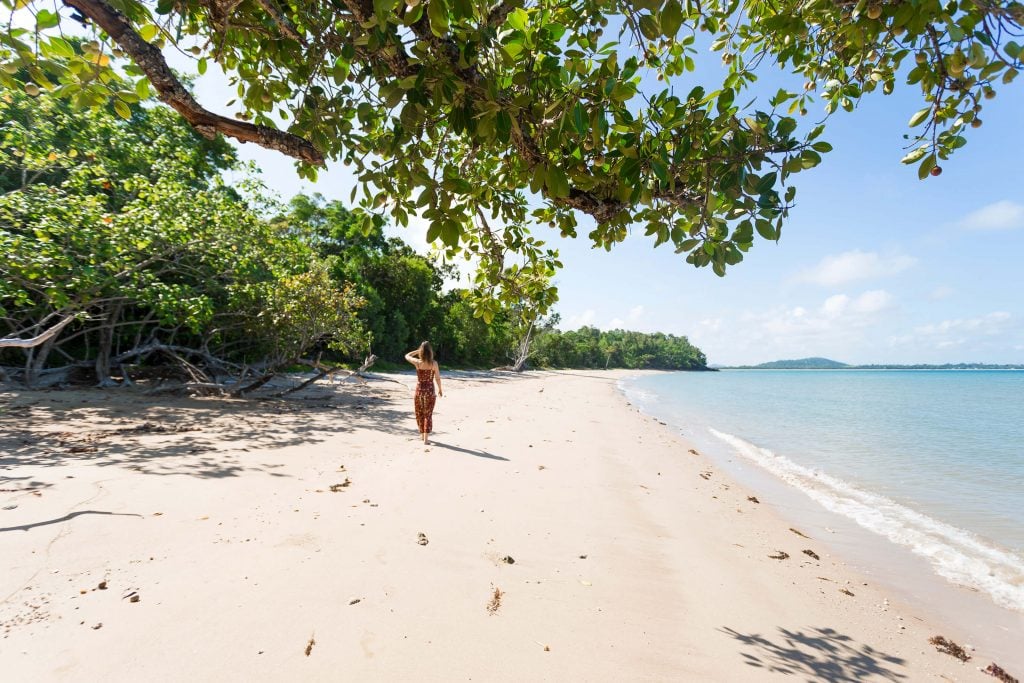
Secret Beaches & Coves of Mission Beach
Mission Beach would be better referred to as Mission Beaches with its 14km stretch of sand interlinking three beaches and four villages. Lesser known are the smaller beaches and coves that make up a huge part of its charming appeal.

